Caves and their mysteries #1-The cave of the Tayos in Ecuador

Sun Rays to the cave -source Bing
The cave of the Tayos is located in the Republic of Ecuador, in the province of Morona Santiago, Limón Indanza Canton, in the irregular mountainous region called the Cordillera del Condor. It owes its name to be the habitat of nocturnal birds called oilbirds (Steatornis caripensis), who live in numerous caves in the Andean jungles of South America. The cave of the Tayos is located in the high jungle Virgin 2 km south of the James River and 800 meters to the East of the Rio Coangos (Kuankus); According to last measurement in 2012 with altimeter GPS, it is 539 m above sea level. The cave is located on land which belong today to the indigenous natives of the Center Union Kuankus (Vernonia) - Cave of the Oilbirds, and is part of the territory independent of the Shuar Arutam. The nearest towns are General Plaza, Méndez and Santiago. Income is it performed under permission from the Corporation Cave of the Tayos in Kuankus there are some alternatives to reach the cave:
- On foot or by horse, from the Yukiantza village; There is a wooden bridge over the river Namagoza, which you must cross, followed by a rise of 300 m and a subsequent decline until the Rio Zamora. Here there is another wooden bridge followed by a 8.5 km road to Coangos.
- Boat, since Yukiantza is accessible by the Santiago River Coangos bass.
- By helicopter, from Macas, where there is a heliport.
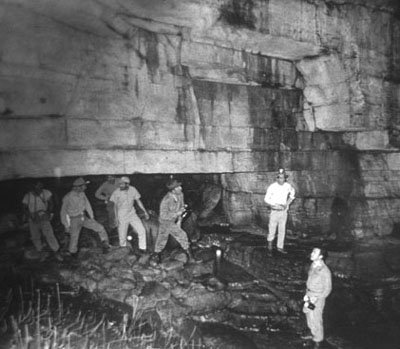
expedition with Neil Armstrong
Explorers more recent expedition
Description of the cave:
The main entrance to the cave consists of a vertical tunnel called the chimney. The mouth or input is 2 m wide and 15.6 m in length in the opening, and has approximately 63 m of depth. The descent from the point where you start the descent is 90 degrees vertically and 48.9 m, with a drop of - 200 md. The only descent can be done using a rope to scale, harness and descend (each person must bring them for his own safety). Once he has come down through the chimney, one is in a giant space of 7.8 meters wide and 68 meters long. After advancing 20 meters towards the East, is another small down 5.6 m high, to definitively enter the various tunnels measuring a total of 17.9 km, of which 4.9 have been explored to date. After descending the second descent, are formations resembling architectonic structures, like for example a giant door, walls and a geometrical tunnel created by water erosion. Immediately be continued to a large room or gallery that has a length of 2.9 km with approximately 50 meters wide, and maintains an average height between 15 to 35 meters. The cave is a geological formation dating back to its inception to approximately 200 million years. The stone formations, contain angles straight and finished with symmetrical shapes and very smooth, which in simple view gives the impression that it had been created by man. The formation of the cave is due largely to the action of the filtered water in the mantle of limestone, which has led to impressive formations of stalactites and stalagmites and stagnates.
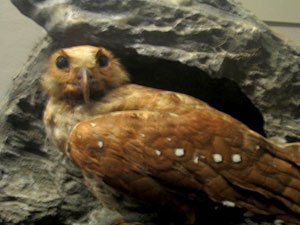
Ocupation of the cave:
archaeologist priest Pedro Porras, found what appears to a burial of an Aboriginal chieftain with their corresponding funeral ornaments (such as vases) today treasured by the Weilbauer Museum. The Argentine naturalized Hungarian Juan Moricz said have found signs of a very developed in the cave of the Tayos civilization habitat. The oldest civilization that are housed in these caves dates from the Upper Paleolithic (48 000-12 000 years BC) where the Cave provided protection during the end of the ice age. Approximately 9000 years BC this civilization leaves the cave climate improvement and are directed towards the South in the coastal part of the Peru and Northern Chile. At the time of the Neolithic age (recent stone age) the cave returns to be inhabited by a Pre-Shuar, this civilisation from 3000 B.C. as used ceramic artifacts check it the University of Munich in a test of carbon 14. Approximately around 1500 BC they begin the first Shuar to reposition themselves in the area and mingle with the natives of the cave. There is record that, until 500 A.D., the cave is inhabited. From there until 1900 practiced the Tayos hunts once a year. The Shuar see the cave with much respect and believe that there lie the spirits of their ancestors.
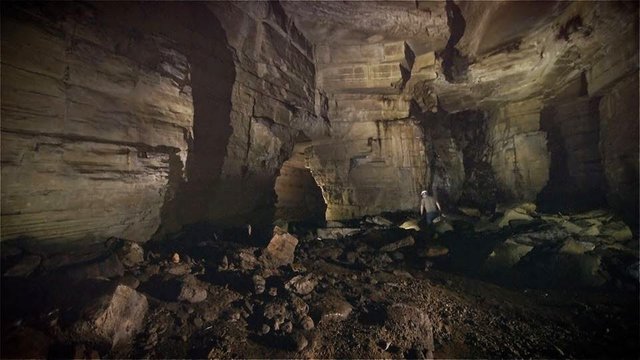
Interior cavern -source Bing
Explorations The cave, with main entrance at an approximate altitude of 540 meters, was used since ancient times by the originating local Shuarque descended each spring with stairs and torches to capture birds mentioned. References written about the cave dating back to 1860 and it is known that it was the subject of visits by seekers of gold and Ecuadorian military personnel in the 1960's. The Salesian priest and Italian documentary filmmaker Carlos Crespi Croci had knowledge of the cave of the Tayos since the 1920s, since was a documentary about the indigenous Shuar in 1927. A series of pieces that were brought to him by members of the Shuar community, according to Crespi were stored in the private Museum of Carlos Crespi Croci in Cuenca (Ecuador). (Almost childish) copies can be detected by such objects, reminiscent of the Asian cultures objects Mesopotamian, Shuar and pre-shuar are only some photographs and videos, since most of these were sold and others stolen in the fire of 1962. After the death of the Salesian priest in 1982, these objects disappeared from the Salesian convent of basin. According to some rumors were sold to the Central Bank of Ecuador by $ 10 million, but policymakers of the Central Bank of Ecuador denied the fact. As a result of this there were a series of expeditions to the place, the best-known organized in 1976 by Scottish adventurer Stan Hall, which included Neil Armstrong, important characters of Archeology and research ex-astronauta and the Ecuadorian army. This expedition made a detailed exploration of the cave which included a personal total of 120 people, and lasted about a week. Britons have extracted 4 sealed wooden crates of large size without exposing its content owners (Shuar), the topic came up to threats of weapons without killing. Then followed more expeditions less frequently. The last expedition was in the year 2012 by Polish Explorer Yoris Jarzynski which concluded that the formation of the cave is naturally occurring geological.
In occult nature publications, it has asserted that Freemasonry from several countries would be interested in the time to find fabulous metal Moricz library. Neil Armstrong was an important Freemason of 32 degree. Also, a group of Mormons came to believe that the metal plates that are described in the book of the Prophet Joseph Smith are precisely which existed according to Moricz in the underground cavern, since the Angel Moroni that mentions the book of Smith, takes the name that resembles the province where the cave is located: Morona Santiago.
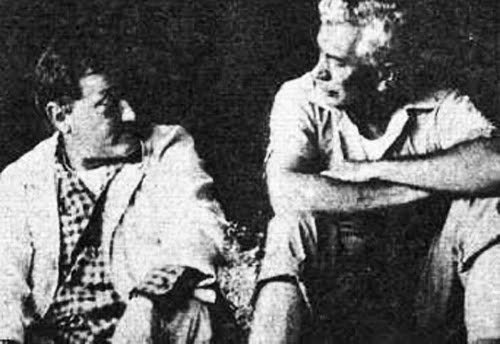
ERICK VON DÄNIKEN and MORICZ -source Bing
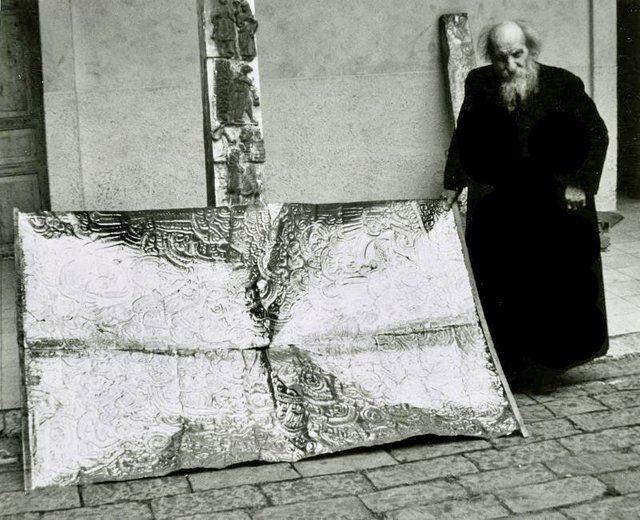
The Metallic Tablets and Father Crespi-source Bing

Padre Crespi-source Bing
Permission:
The Inter provincial Federation of Shuar centers (FICSH) with offices located at Sucúa (Ecuador) has a particular Ordinance for all visitors, foreign and national, private and legal persons who want to get to the Shuar territories since 2008. It is therefore necessary to remove an entry permit (certificate) and temporary stay issued by the said authority prior to the entry of the cave of the Oil birds and the Centros Shuar area. [citation needed] The Trade Union Centre indigenous Kuankus, legal owner of the cave, has decided in 2012 to charge a tax for the entrance to the cave, is forbidden to remove any object from the cave. Photographing is allowed.
Actual situation:
Nowadays there are many wounds among the local people whom they feel cheated and stolen by all researchers and tourists. There are many authors of books that have become a good fortune with the exhibition of the cave of the Tayos but local indigenous peoples have not received any compensation or thanks for this reason. After the "looting" of the metal plates, ceramic, tables the cave was completely without traces of life. Little that had signs of life has been removed, leaving only stones of geological formation. On the other hand, the historical goods that have existed in the cave, have not been in any Museum or exhibition, and there is also no complaints to get these assets back to their place of origin. The native Shuar for this reason are not very open to enter to any alien, but logically offering collaboration one can help the development of this community.
You can find more info in Wikipedia.
Info source Wikipedia.
I love to explore Cave but the one I know aren't that big and that I know they don't have any kind of mystery or secrets. Well I hope you like this post In my case I did like the history of the cave and its story and mystery and secrets. If you like this please remember to upvote, follow me and comment, thanks for stopping by.

Those are some beautiful caves
That's right I still looking to found extraordinary and interesting ones I have found a few but they still a wip. but I will keep posting. Like I am a cave fan.
Caves are fascinating. Been inside a few. Wrote a piece on caves in Jamaica at
https://oletimesumting.com/2016/07/12/caves-and-sinkholes-havens-of-freedom-and-deathtraps/